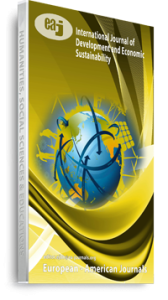The movement of capital across national boundaries has remained an interesting area in development narratives considering its role in the development process. This paper provides deeper insights into the empirical relationship between capital inflows and per capita GDP growth in Nigeria between 1980 and 2018. The heterogeneous nature of foreign capital was taken into consideration following its decomposition into its key components of debt, aid and migrants’ remittances. Time series for each of the variables were collected from secondary sources including NBS, World Bank World WDI, World Bank, International Debt Statistics and IMF International Financial Statistics. Combinations of ADF unit root and bounds cointegration tests in addition ARDL and Granger causality tests form basis for the analysis. It was found from the unit root test results that the variables are mixed integrated. Again, the bounds test show evidence of long run relationship amongst the variables. The ARDL estimates reveal that migrants’ remittances have the significant positive effect on per capita GDP in the long run. With 1 percent increase in remittances, per capita GDP will, on the average, increase by about 2.2595 percent. On the other hand, multilateral debt negatively affects per capita GDP in both short and long run. It was found from the results that bidirectional causality exists between migrants’ remittances and per capita GDP while unidirectional causality flows from technical cooperation grants to GDP per capita. Given the findings, it is recommended that policy makers should initiate policies and provide incentives helpful for mobilizing international resources and allow for a paradigm shift that will ensure the allocation of the resources to key sectors with high potentials for growth of per capita GDP.
Keywords: Aid, Debt, Foreign Capital, Per Capita GDP, Remittances, development narrative

